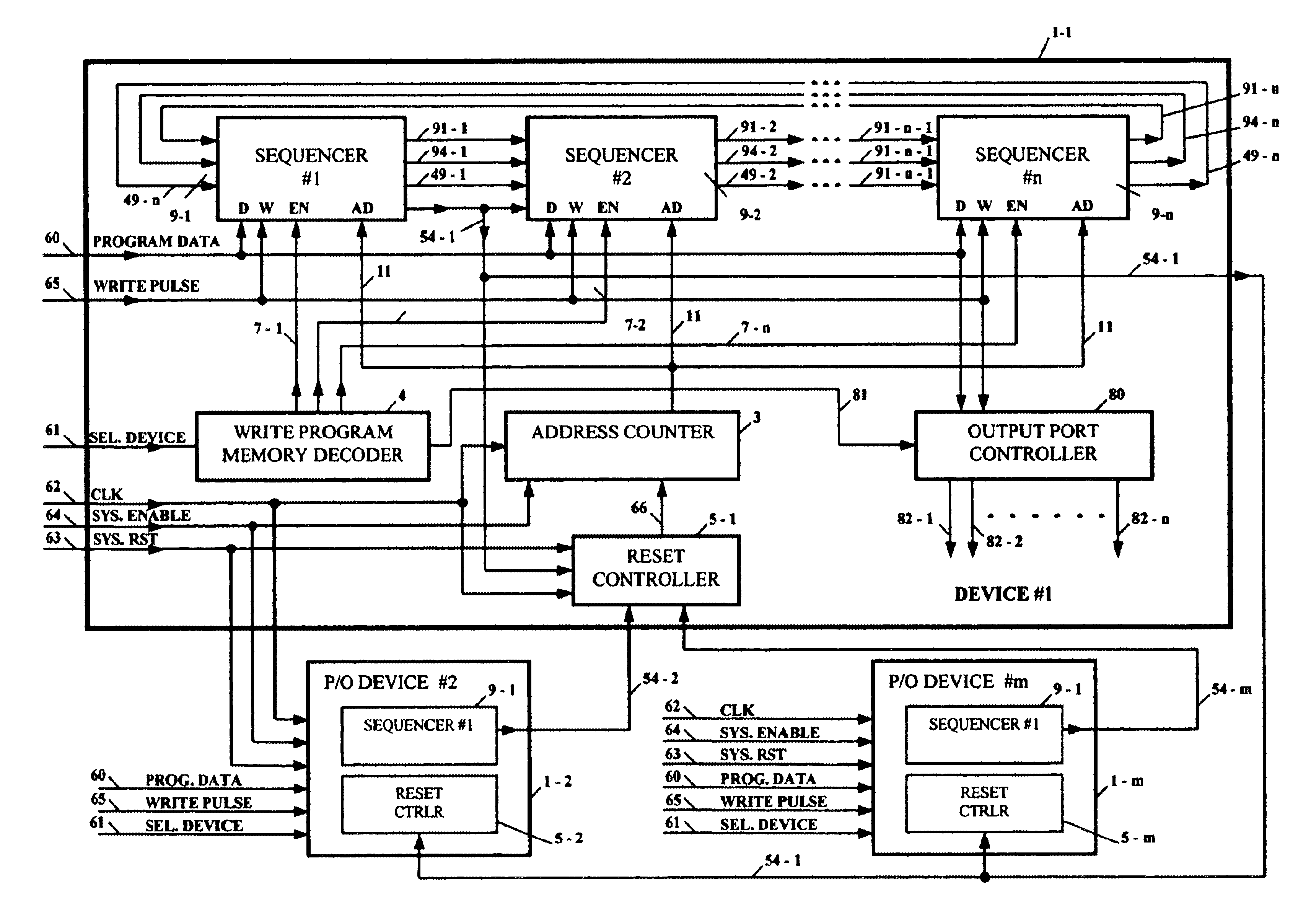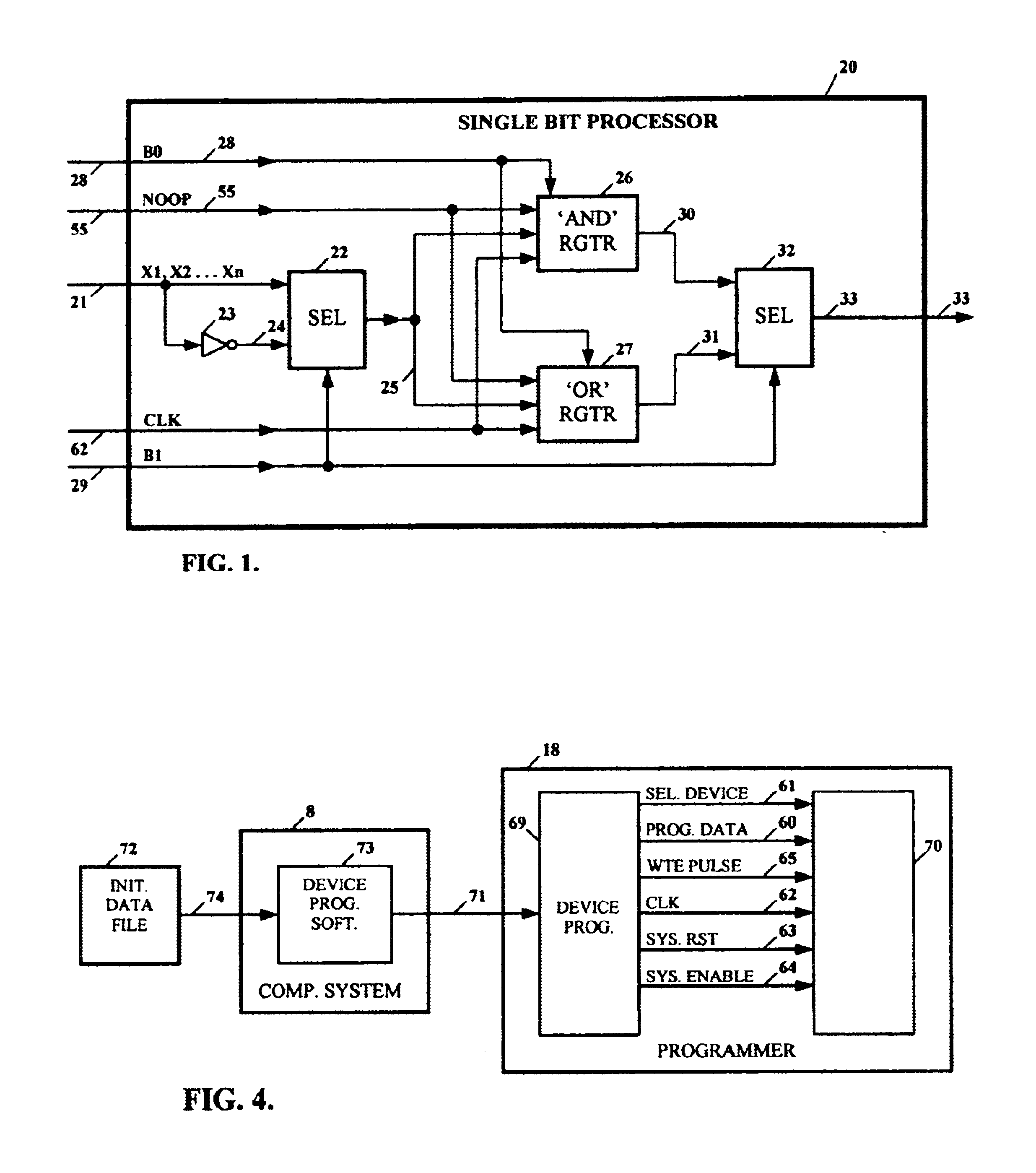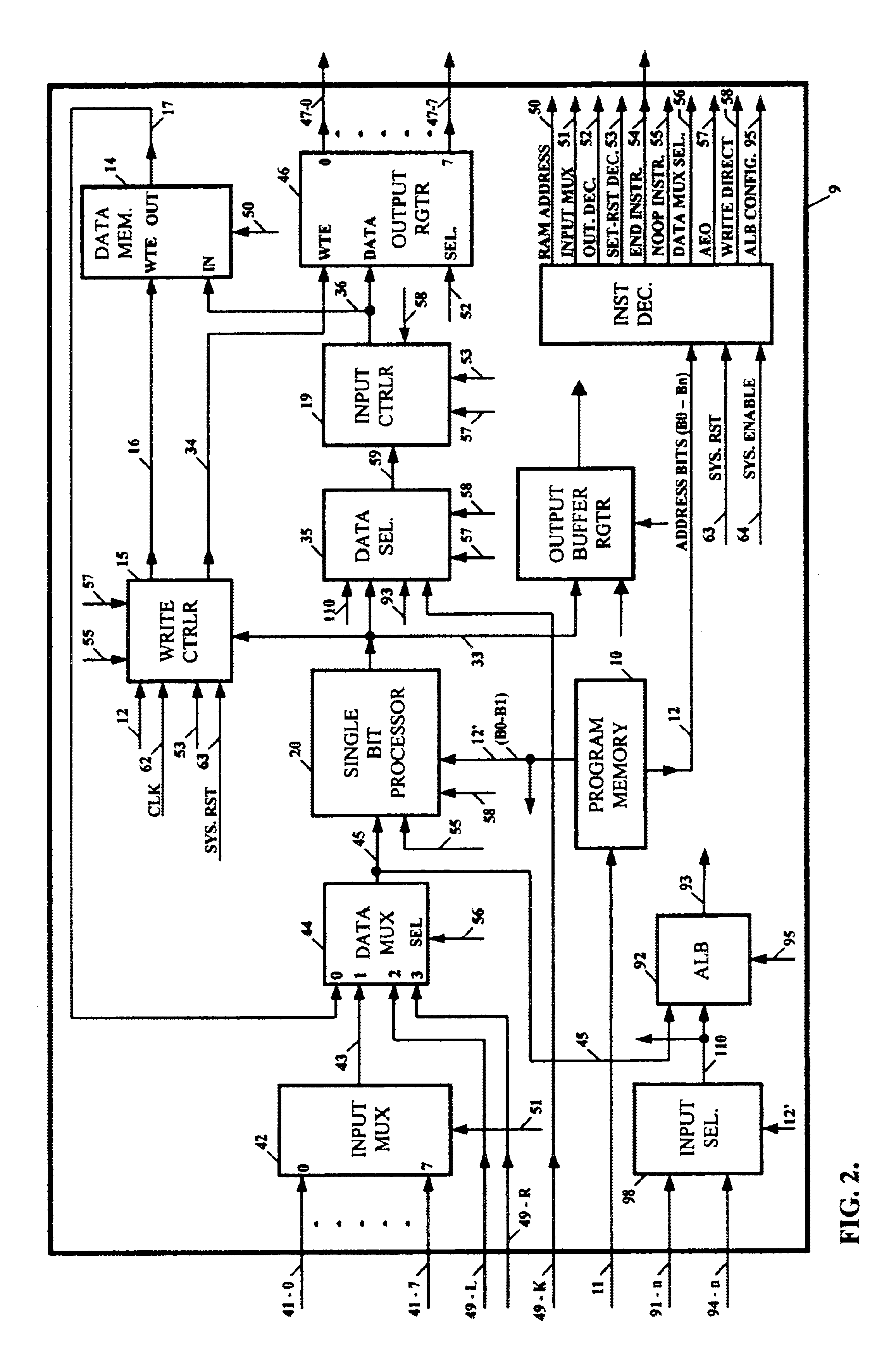Compiler synchronized multi-processor programmable logic device with direct transfer of computation results among processors
a programmable logic and processor technology, applied in computation using denominational number representation, instruments, architectures with multiple processing units, etc., can solve the problems of increasing the place and route time of such devices, increasing the complexity of layout analysis, and requiring cumbersome and laborious critical path timing analysis of routed designs. , to achieve the effect of quick and efficient processing of system level designs and better utilization of silicon surface area
- Summary
- Abstract
- Description
- Claims
- Application Information
AI Technical Summary
Benefits of technology
Problems solved by technology
Method used
Image
Examples
Embodiment Construction
[0033]A single bit processor embodiment is illustrated in FIG. 1. This embodiment facilitates Reverse Polish Notation (RPN) machine instruction execution. Processor 20 is based on two (2) concurrent operations that are performed on all input variables in parallel. They are shown in FIG. 1 by way of an example as AND register 26 and OR register 27. Since processor 20 allows an inversion operation by means of inverter 23, the presence of both registers 26 and 27 is not mandatory to execute logic equations, because de Morgan theorem allows conversion of AND operations into OR operations and vice versa by using the inverter 23. It will be within the scope of the invention to replace either the AND register 26 or the OR register 27 by a block performing an XOR or other logic operation.
[0034]AND register 26 is set to logical one (1) at the beginning of each logic equation execution. The first zero (0) will reset the register 26 to zero (0) and will keep it at zero (0) independent of the f...
PUM
 Login to View More
Login to View More Abstract
Description
Claims
Application Information
 Login to View More
Login to View More - R&D
- Intellectual Property
- Life Sciences
- Materials
- Tech Scout
- Unparalleled Data Quality
- Higher Quality Content
- 60% Fewer Hallucinations
Browse by: Latest US Patents, China's latest patents, Technical Efficacy Thesaurus, Application Domain, Technology Topic, Popular Technical Reports.
© 2025 PatSnap. All rights reserved.Legal|Privacy policy|Modern Slavery Act Transparency Statement|Sitemap|About US| Contact US: help@patsnap.com



